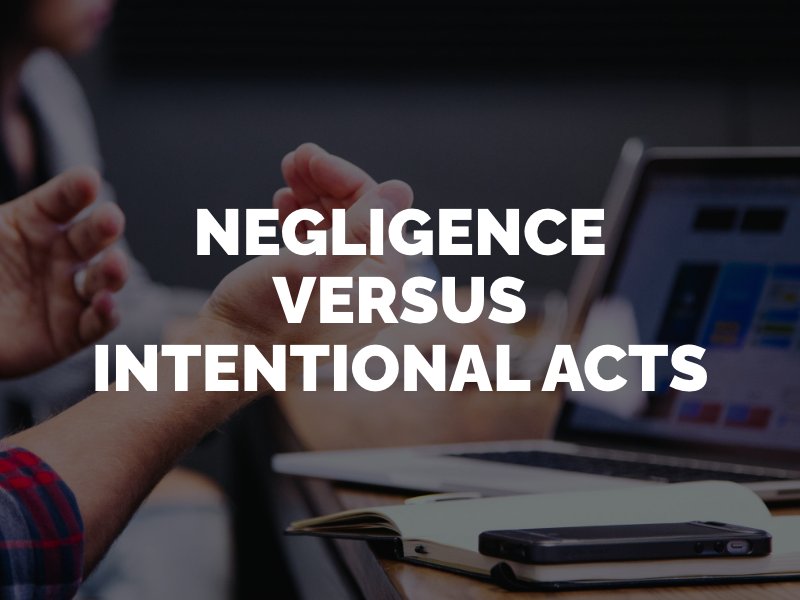Negligence vs. Intentional Acts Explained
In California, you may have the right to file a personal injury claim if someone else is responsible for causing you injury or harm. If an individual caused your injury through negligence or an intentional act, you may qualify for financial compensation. An intentional act, however, could also lead to criminal charges against the defendant.

What Is the Difference Between Negligence and Intent to Harm?
In a legal context, someone is negligent if he or she fails to use an appropriate amount of care for the situation. If the party being accused of causing the victim’s injuries, known as the defendant, behaved in a way that a reasonable person would not have in the same situation, he or she is guilty of negligence.
An example of negligence is a motor vehicle driver exceeding the speed limit and causing a car accident. Negligence can occur unintentionally, such as through an individual’s carelessness or inattention. It can describe any failure to meet the applicable standard of care, leading to foreseeable harm.
An intentional tort, on the other hand, is done with knowing or willful intent to injure the victim. An intentional act of wrongdoing involves actions or behaviors done with the specific purpose of causing harm or injury to another person or that person’s property. Intentional acts can include many different crimes, such as assault, battery, trespassing, vandalism and theft.
Proving Negligence vs. Intentional Acts of Wrongdoing
During a personal injury case in California, the victim or plaintiff has the burden of proof. This means he or she is required to prove what he or she is claiming to receive a settlement or judgment award. The burden of proof in the civil justice system is a preponderance of the evidence, or more likely to be true than not true.
Proving negligence requires clear and convincing evidence of four elements:
- The defendant owed the plaintiff a duty of care, or a responsibility to act in a reasonable manner.
- The defendant breached the duty of care through a careless act or failure to act.
- The defendant’s breach of duty was the proximate or actual cause of the victim’s harm.
- The plaintiff suffered real, compensable damages as a result of the accident.
Unlike negligence, intentional acts require proof that the perpetrator had a conscious desire to cause harm to the plaintiff. Proving intent takes evidence that the defendant knew with substantial certainty that his or her actions would result in harm or cause the precise consequences that occurred. Intent to harm can be explicitly expressed or inferred from the circumstances surrounding the incident.
Your Legal Rights After Being Injured by an Intentional Act
If someone acts against you on purpose and this results in a physical injury, emotional distress or property damage, you may have rights in both the civil and criminal justice systems. The perpetrator could be held civilly liable for your losses, meaning he or she will be responsible for financially reimbursing you for related medical expenses, lost wages, and pain and suffering.
The perpetrator could also face criminal charges for intentionally causing you harm. A criminal conviction could result in jail or prison time, fines, fees, the loss of certain rights or privileges, and various other penalties against the defendant. A criminal conviction could then be used as evidence of wrongdoing in a civil claim against the same defendant.
In an intentional tort personal injury case, the California courts may grant the plaintiff punitive damages in addition to a compensatory award. The right to punitive damages in California under Civil Code Section 3294 is granted to a plaintiff who can prove by clear and convincing evidence that the defendant is guilty of oppression, fraud or malice.
